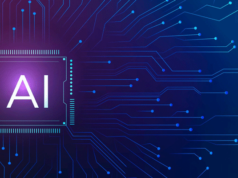Safeguarding the Digital Realm: Unraveling the Complex Web of Cybersecurity Threats in a Digitally Connected World
In the quickly developing and interlinked domain of the computerized world, the threats presented by cybersecurity has a steady presence. With advancing innovative headways, cybercriminals constantly adjust their strategies to take advantage of weaknesses, introducing dangers to the security of individuals, associations, and nations. Getting a handle on the complexities of these cybersecurity threats is fundamental for making powerful procedures to safeguard our computerized environment
The Evolution of Cybersecurity Threats
The verifiable scenery of cybersecurity threats is an account of steady turn of events. What once began as separated events of PC viruses and malware has changed into a cutting edge and interconnected network of computerized threats. Today, cybercriminals use an alternate extent of systems, from phishing and ransomware to advanced persistent threats (APTs) and zero-day shortcomings.
- Phishing: The Art of Deception
Phishing stays one of the most inescapable and successful cybersecurity threats. This strategy includes fooling people into disclosing gentle data by acting like honorable entity. Whether through misleading messages, counterfeit sites, or social designing strategies, cybercriminals exploit human brain to acquire unapproved admittance to individual or corporate information.
The development of phishing assaults has seen an ascent in spear-phishing, a designated approach that tailors false messages to explicit people or associations. With the utilization of virtual entertainment and openly accessible data, cybercriminals create persuading and customized messages, improving the probability of progress.
- Ransomware: Holding Data Hostage
Ransomware assaults have flooded lately, causing huge disturbances and monetary misfortunes. This type of digital danger implies encrypting a targets information and requesting a payoff for its delivery. The WannaCry and NotPetya assaults featured the worldwide effect of ransomware, influencing basic foundation, medical services frameworks, and organizations.
The sophistication of ransomware has created, with cybercriminals adopting advanced encryption methodology and targeting high-profile components. The ascent of ransomware as a service on the dark web has additionally democratized the utilization of ransomware, allowing even those with bound technical skill to participate in these malicious activities.
- Advanced Persistent Threats (APTs): Stealthy and Persistent
Advanced Persistent Threats address a more sophisticated and targeted type of digital attack. APTs include a drawn out and targeted exertion by adversaries to infiltrate a particular target, frequently for spying or data robbery. Dissimilar to cyberattacks, APTs are carefully planned and executed, using advanced tactics to remain undetected for broadened periods.
- Nation-State Cyber Attacks
Nation-states have become conspicuous actors in the realm of cybersecurity threats. State-supported digital attacks aim to achieve political, financial, or military goals through digital means. Notable examples recollect the alleged impedance in elections, cyber espionage, and the disturbance of critical infrastructure.
The dare of attaching digital attacks to particular nations adds a layer of intricacy to the cybersecurity landscape. The utilization of proxies, false-flag operations, and the consideration of non-state actors make it hard to authoritatively see the perpetrators, complicating diplomatic reactions and countermeasures.
- Zero-Day Vulnerabilities: Unseen and Exploited
Zero-day vulnerabilities allude to unseen or undisclosed software flaws that cybercriminals can take advantage of before designers release a fix. These vulnerabilities are particularly valuable to attackers because they offer an open door to think twice without recognition. The disclosure and weaponization of zero-day vulnerabilities frequently include a race among engineers and malicious actors.
The increasing commercialization of zero-day takes advantage of the dark web has energized a flourishing market. Legislatures, criminal organizations, and hackers alike actively trade in these digital weapons, representing a constant threat to the security of software and frameworks across the globe.
III. The Internet of Things (IoT): Expanding the Attack Surface
The proliferation of internet of things (IoT) gadgets has acquainted new aspects with cybersecurity threats. While associated gadgets enhance comfort and proficiency, they also augment the attack surface for cybercriminals. Unreliable (IoT) gadgets can act as passage focuses for malicious actors to infiltrate networks, compromising privacy and security.
- Insecure IoT Devices
Many IoT gadgets lack powerful security features, making them vulnerable to exploitation. From smart home appliances to industrial control frameworks, the vulnerabilities in IoT gadgets can have far-reaching outcomes. Compromised IoT gadgets can be weaponized to launch distributed denial-of-service (DDoS) attacks, participate in botnets, or act as turn focuses for greater interruptions.
- Supply Chain Attacks: A Hidden Threat
Store network attacks include infiltrating and compromising the frameworks of confided in merchants or providers to gain unauthorized access to the ultimate target. This tactic has become increasingly prevalent, as found in high-profile cases, for example, the SolarWinds and Kaseya breaches. By compromising the software or hardware inventory network, cybercriminals can circulate malicious updates to many organizations simultaneously.
- Mitigating Cybersecurity Threats: A Multi-Layered Approach
Successfully addressing the myriad cybersecurity threats requires a complete and complex approach. Proactive measures, awareness, and collaboration are key parts in building a versatile guard against the developing tactics of cybercriminals.
- User Education and Awareness
Educating clients about cybersecurity best practices is a fundamental stage in diminishing the gamble of digital threats. Clients should be vigilant against phishing attempts, areas of strength for utilize password cleanliness, and understand the importance of keeping software and gadgets updated. Training programs and awareness campaigns can engage individuals to perceive and report potential threats, creating a human firewall against cyber attacks.
- Robust Cyber Hygiene Practices
Maintaining solid cyber disinfection is essential for individuals and organizations. Regularly updating software, executing security patches, and coordinating liability assessments can lessen the gamble of exploitation. Additionally, organizations ought to execute the standard restricting access to delicate information and frameworks just to the individuals who require it.
- Advanced Threat Detection and Response
Pre-analyzing threat acknowledgment and reaction capabilities is critical for recognizing and mitigating cybersecurity threats in real time. Machine learning, AI, and interactive analytics can enhance the ability to distinguish irregularities and questionable activities that may indicate a potential security breach. A proactive reaction to events can significantly diminish the impact of digital attacks.
- Collaboration and Information Sharing
Cybersecurity is an united exertion that needs collaboration and information sharing among individuals, organizations, and states. Founding and participating in threat information sharing platforms that enables the rapid distribution of data about arising threats. This aggregate approach sustains the overall cybersecurity act.
Conclusion
As we navigate the intricacies of a digitally associated world, the ubiquitous threat of cybersecurity breaches highlights the requirement for constant vigilance and proactive measures. From the misleading tactics of phishing to the stealthy diligence of APTs and the expanding attack surface introduced by IoT, the digital threat landscape is assorted and consistently advancing.
Addressing cybersecurity threats requires an extensive and collaborative approach, consolidating technological arrangements with client learning, hearty cyber cleanliness practices, and advanced threat location capabilities. Simply through aggregate endeavors can we want to create areas of strength for a solid digital climate that withstands the constant advances of cybercriminals, safeguarding our data, privacy, and the critical frameworks that help our interconnected world.








